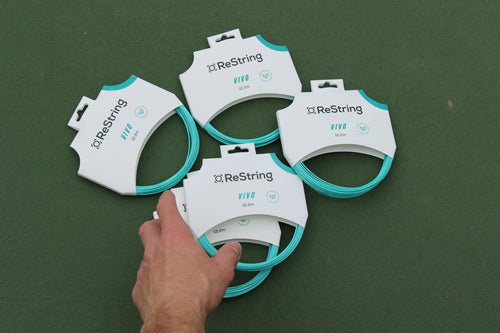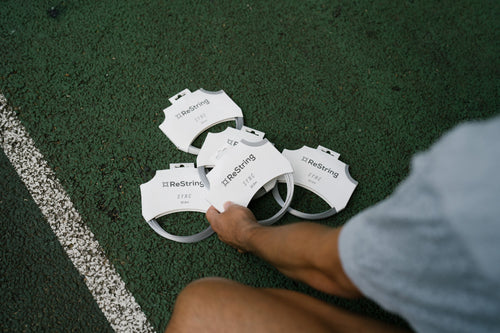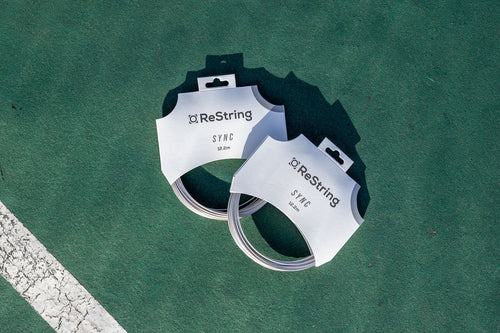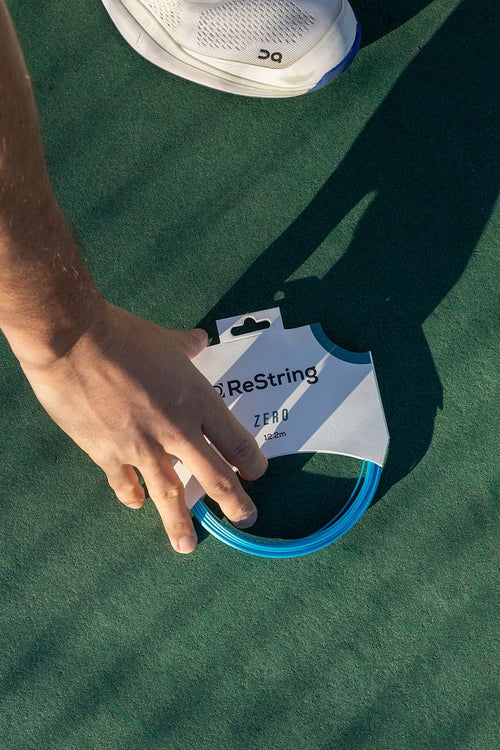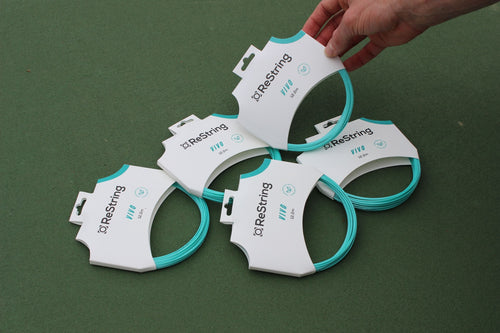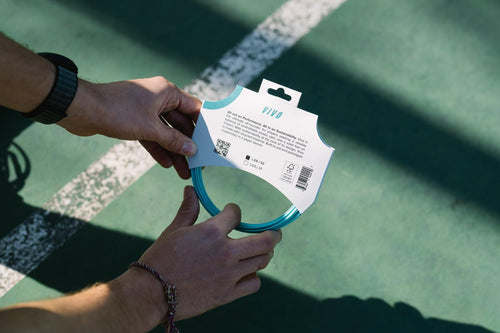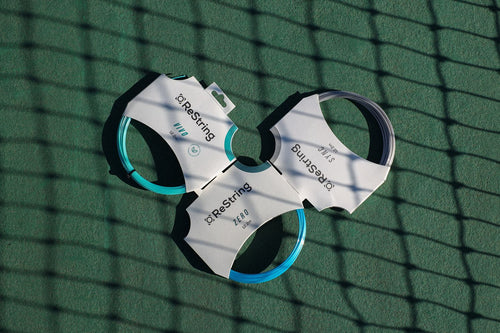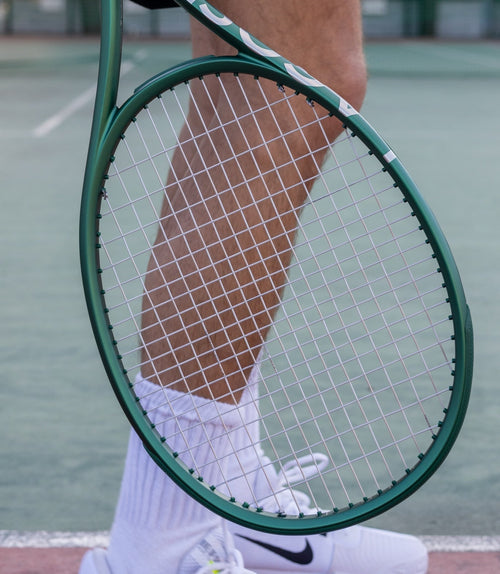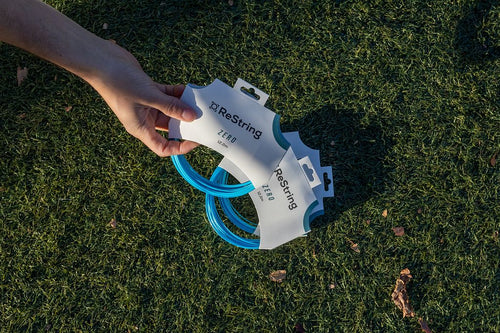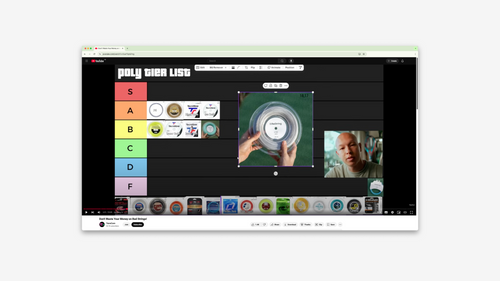How to Hybrid Vivo and Sync Tennis Strings
Juan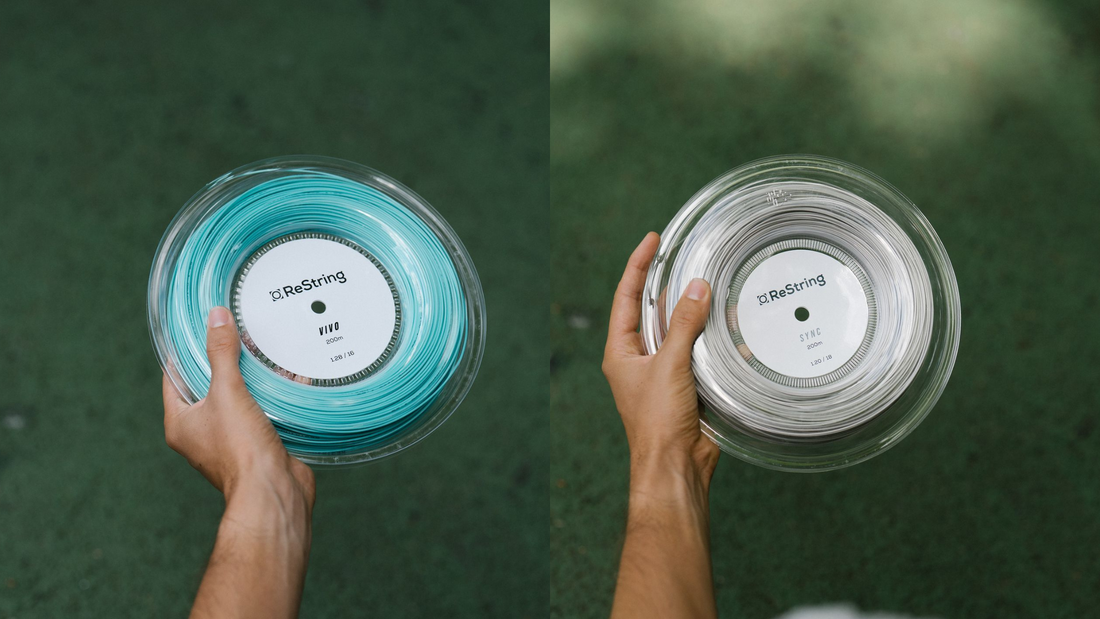
String choice matters more than many players realize.
While most tennis players use the same string throughout their racket, hybrid setups offer more precise tuning.
In a hybrid setup, your main strings shape about 70% of your string bed's character, with cross strings contributing 30%.
If you’re new to hybrid concepts, our mains vs crosses breakdown covers the essentials.
This guide goes over two hybrid setups using two ReString strings, Vivo and Sync.
Vivo mains with Sync crosses (Vivo x Sync)
Sync mains with Vivo crosses (Sync x Vivo)
Let's explore what each combination delivers and identify which serves your game best.
Vivo in the Mains, Sync in the Crosses
Vivo mains provide control and spin characteristics from the six-sided string. You get solid feedback and a really nice firm response from the stringbed.
Sync crosses elevate the feel factor significantly due to it being a softer string. The round string profile allows smoother interaction and brings extra snapback to your shots.
This setup shines for players who value Vivo's consistent control and want a shaped profile in the mains for bite. Sync works perfectly in the crosses because of the round and slick profile, making them slide easily over Vivo, creating great snapback.
This setup will be much more common than Sync in the mains and Vivo in the crosses, for reasons we’ll go into now.
Sync in the Mains, Vivo in the Crosses
Sync mains deliver their trademark precision and feel. Vivo crosses aim to add a bit of firmness, and also a touch more spin potential.
Overall, the feel you'll get from this set up is one dominated by control and feel.
However, this particular combination of strings (Vivo and Sync) works best with the shaped string (Vivo) in the mains and the slick string (Sync) in the crosses to get the best of both worlds.
It's always more logical to have the shaped string in the mains to make use of the 'bite' factor. The slick string being in the crosses gives you more snapback allowing the mains to glide seamlessly.
However, if you’re committed to Sync in the mains, we would recommend a slick string in the crosses like Zero to benefit from that added snapback.
Vivo does not have the same level of snapback as Zero or Sync.
Vivo and Sync String Bed Spectrum
These hybrids make more sense when viewed across a performance spectrum.

A full bed of Vivo represents control and spin with a firm, reliable response.
A full bed of Sync emphasizes precision and feel with incredible snapback and control.
Vivo x Sync combines roughly 70% of Vivo's bite with 30% of Sync's feel properties.
Sync x Vivo offers 70% of Sync's precision with 30% of Vivo's firmer feel.
Conclusion
Hybrid stringing opens performance possibilities that single-string setups can't match.
The smart approach is to start with your preferred main string and test complementary crosses.
If you play Vivo and want even better feel, try Sync crosses. This combination delivers real performance upgrades.
If you prefer Sync, adding Vivo crosses is possible. However, consider adding Zero to the crosses instead.
Test both strings individually to understand their personalities, then experiment with different setups.
About the Author: Juan is the co-founder of ReString. He was born in Argentina, raised in Japan, and moved to the US to pursue college tennis. He now plays as an ATP & WTA hitting partner.

